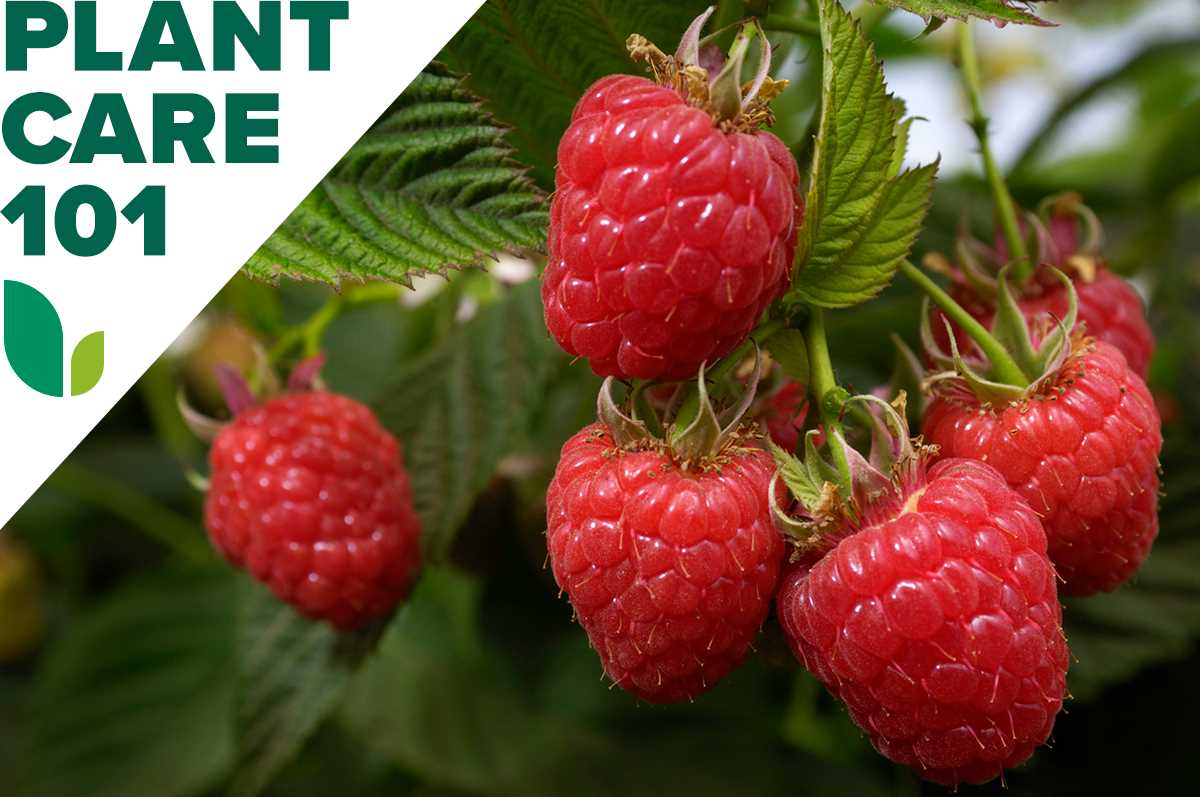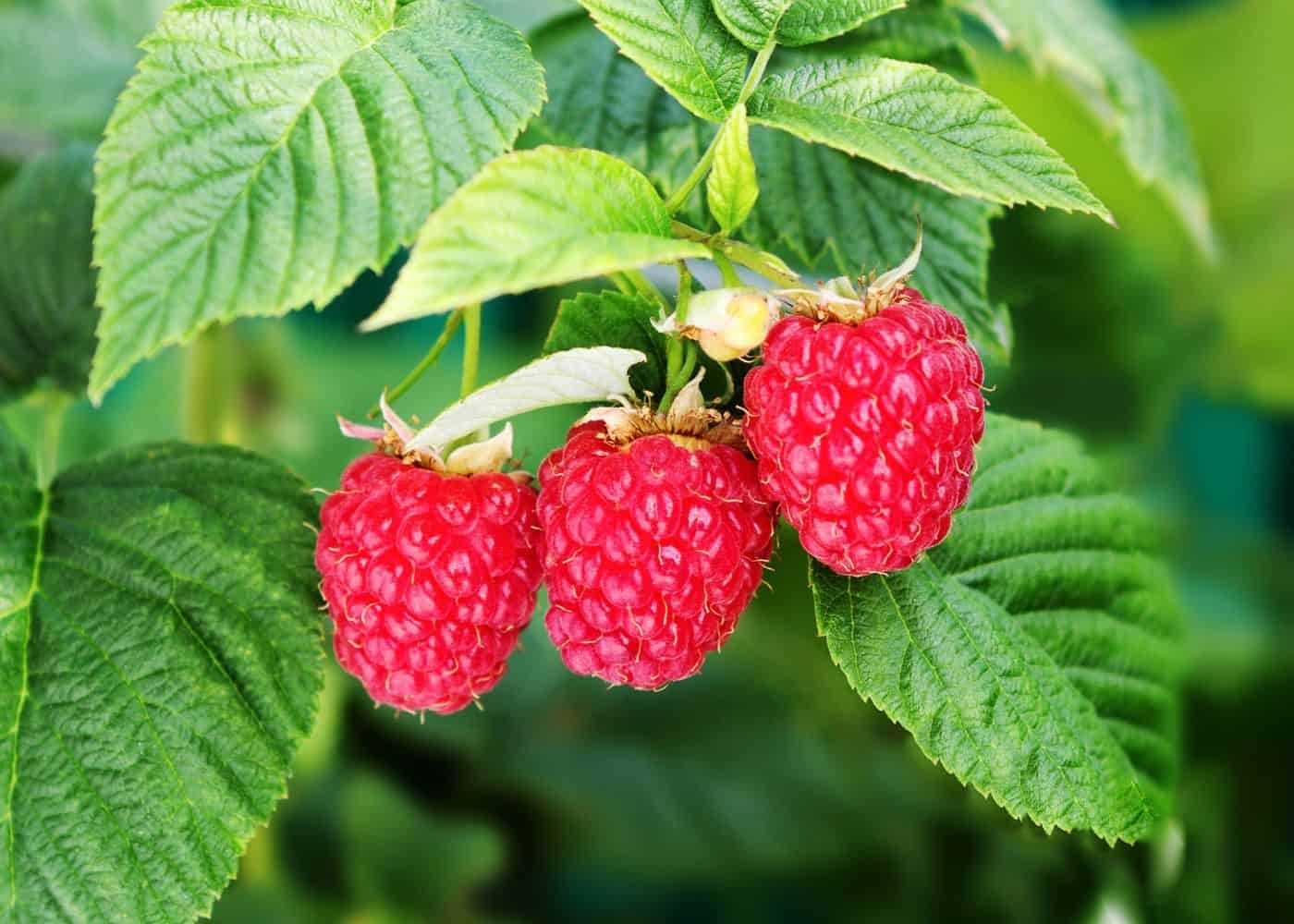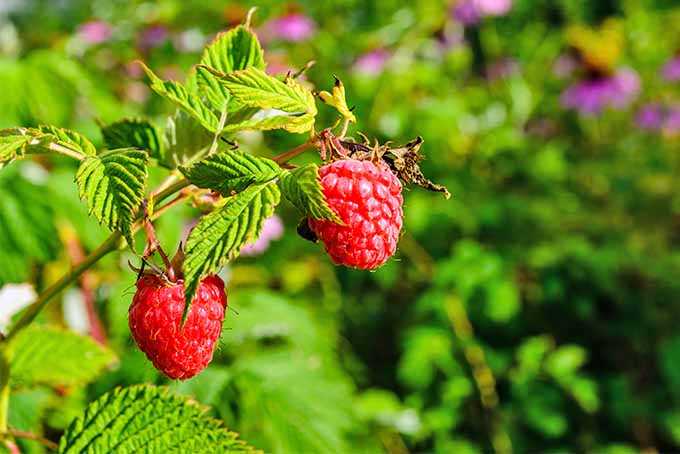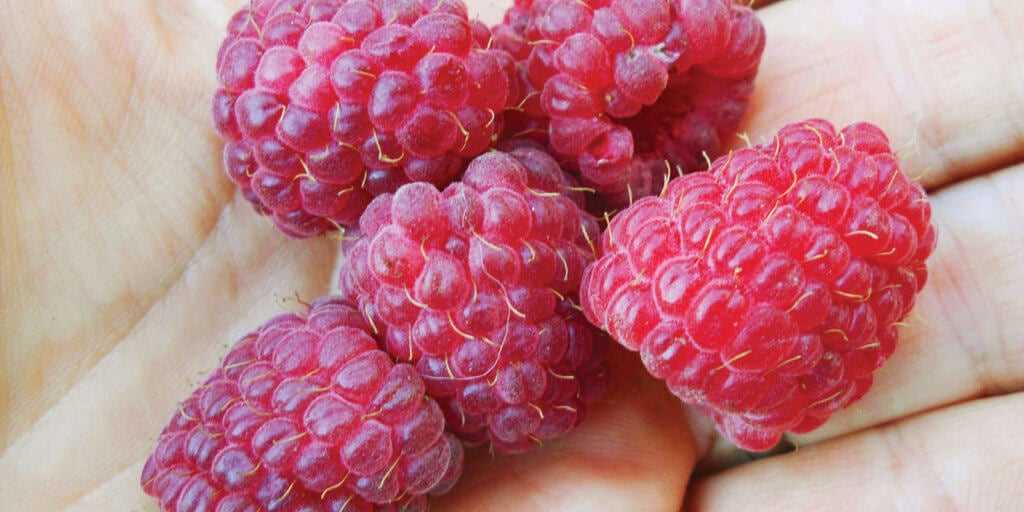- A Smart Technique for Pruning Everbearing Raspberries
- Why Prune Everbearing Raspberries?
- When to Prune
- The Smart Pruning Technique
- Additional Pruning Tips
- Why Pruning Is Important
- Tools You Will Need
- Step-by-Step Pruning Guide
- Choosing the Right Time
- Common Mistakes to Avoid
- Benefits of Pruning
- Enjoy Bigger Berries!
- 1. Prune and Thin
- 2. Provide Adequate Sunlight
- 3. Mulch and Fertilize
- 4. Water Wisely
- 5. Harvest at the Right Time
- Question-answer:
- When is the best time to prune everbearing raspberries?
- How much should I prune off my everbearing raspberry plants?
- Why is it important to prune everbearing raspberries?
- Can I prune my everbearing raspberries in the fall?
- Do I need any special tools to prune everbearing raspberries?
- Video: All about black raspberry Summer Pruning!
If you love raspberries, then you’ll be thrilled to learn about a smart technique for pruning everbearing raspberries that can help you enjoy bigger and more abundant berries. Everbearing raspberries are a wonderful addition to any garden, as they bear fruit twice a year – in the summer and in the fall. However, without proper pruning, these plants can become crowded and produce smaller berries.
Pruning is an essential part of maintaining the health and productivity of everbearing raspberries. The goal is to remove old canes and thin out the plant to allow air circulation and sunlight to reach the berries. This not only improves the quality of the fruit, but also helps prevent diseases and pests.
There are a few key steps to follow when pruning everbearing raspberries. First, identify the old canes by their woody appearance and lack of new growth. These canes should be completely removed at the base of the plant. Next, thin out the remaining canes by cutting out any weak or crossing branches. Leave about 4-6 strong, healthy canes per plant.
A Smart Technique for Pruning Everbearing Raspberries

Pruning everbearing raspberries is an essential task to ensure a healthy and productive raspberry plant. With the right technique, you can enjoy bigger berries and promote better growth.
Why Prune Everbearing Raspberries?
Pruning is necessary for everbearing raspberries to maintain a balance between fruit production and plant health. By pruning, you can remove dead or damaged canes, improve air circulation, and allow sunlight to reach the lower parts of the plant.
When to Prune
Pruning can be done twice a year for everbearing raspberries. The first pruning should be done in early spring, when new growth begins. The second pruning should be done in late summer or early fall, after the last harvest. This will help stimulate new growth and prepare the plant for the next season.
The Smart Pruning Technique
Follow these steps to prune everbearing raspberries:
- Identify the canes: Start by identifying the new canes, which are green and flexible, and the older canes, which are brown and woody.
- Remove the old canes: Carefully cut the older canes at the base, near the ground. These canes have already produced berries and will not bear fruit again.
- Thin out the new canes: Select the healthiest and strongest new canes and remove the weaker ones. Leave about 4-6 canes per foot of row, spaced evenly.
- Prune the remaining canes: Cut the remaining canes back to a height of 4-6 feet. This will promote branching and more fruit production.
- Remove any suckers: Suckers are new shoots that emerge from the ground. These should be removed to prevent overcrowding and maintain the plant’s energy.
Additional Pruning Tips

Here are some additional tips to keep in mind when pruning everbearing raspberries:
- Wear gloves to protect your hands from the thorns.
- Sanitize your pruning tools before and after use to prevent the spread of diseases.
- Dispose of the pruned canes and plant debris properly to prevent the spread of pests and diseases.
- Regularly inspect the raspberry plant throughout the growing season and prune as needed to remove any damaged or diseased canes.
By following the smart pruning technique and implementing these tips, you can ensure the health and productivity of your everbearing raspberry plant. Enjoy bigger and tastier berries!”
Why Pruning Is Important
Pruning is an essential task for maintaining the health and productivity of everbearing raspberries. There are several reasons why pruning is important:
- Stimulates Growth: Pruning stimulates new growth and encourages the plant to produce more fruit. By removing old and unproductive canes, the plant can channel its energy into developing new canes that will bear bigger and better berries.
- Improves Air Circulation: Pruning helps to improve air circulation within the raspberry bush. This reduces the risk of diseases and pests, as well as preventing the growth of mold and mildew. Good air circulation also allows the berries to dry quickly after rain, reducing the chance of rot.
- Controls Size and Shape: Pruning allows you to control the size and shape of the raspberry bush. By removing excess canes, you can prevent overcrowding and ensure that each cane has enough sunlight and space to thrive. This improves the overall health of the plant and makes harvesting easier.
- Increases Fruit Size: Pruning allows the plant to direct more energy into producing larger berries. By removing some of the canes, the plant can focus on developing fewer, but larger, fruits. This results in a higher quality harvest with bigger and juicier berries.
- Maintains Longevity: Regular pruning helps to maintain the longevity of the raspberry plant. By removing old canes and thinning out the bush, you can promote better airflow and reduce the risk of diseases. This ensures that the plant remains healthy and productive for many years.
Overall, pruning is a crucial technique for optimizing the growth and productivity of everbearing raspberries. By following the proper pruning practices, you can enjoy bigger and more delicious berries while keeping your plants healthy and vibrant.
Tools You Will Need

Before you start pruning your everbearing raspberries, make sure you have the following tools handy:
- Pruning Shears: These are essential for cutting through the canes and removing any unwanted growth. Look for a pair of shears with sharp blades and a comfortable grip.
- Gardening Gloves: Protect your hands from thorns and scratches by wearing a pair of sturdy gardening gloves. Choose gloves that fit well and provide good grip.
- Pruning Saw: If you have older, woody canes that are difficult to cut with shears, a pruning saw can come in handy. Make sure you choose a saw with a sharp, fine-tooth blade.
- Bucket or Tarp: When pruning your raspberries, you’ll need a place to collect all the trimmings. Use a bucket or a tarp to easily gather and dispose of the cut canes.
Having these tools ready before you begin will make the pruning process much easier and efficient. With the right tools at hand, you’ll be able to successfully prune your everbearing raspberries and enjoy bigger and tastier berries!
Step-by-Step Pruning Guide
Pruning everbearing raspberries is crucial for maintaining their health and productivity. Follow these step-by-step instructions to properly prune your everbearing raspberry bushes:
- Start pruning in late winter or early spring when the bushes are still dormant. This allows you to easily see the branches and make accurate cuts.
- Begin by removing any dead, damaged, or diseased canes. These canes are usually discolored, shriveled, or brittle. Cut them off at the base, close to the ground.
- Next, identify the oldest canes. These are thicker and have peeling bark. Remove them by cutting them off at the base as well.
- Thin out the remaining canes by removing any weak or crowded ones. Aim to have 4-6 healthy canes per linear foot. This allows for better airflow and sunlight penetration.
- Shorten the remaining canes by cutting them back to a height of 4-5 feet. This encourages vigorous growth and helps the plant produce bigger berries.
- Remove any lateral branches or suckers that are growing too close to the ground. These can divert energy away from the main canes.
- Clean up any pruned debris and dispose of it properly to prevent the spread of pests and diseases.
- Consider applying a layer of mulch around the base of the plants to conserve moisture, suppress weeds, and insulate the roots.
Remember to wear gloves and use clean, sharp pruning shears to make clean cuts and minimize the risk of introducing infections. Regular pruning helps promote a healthier, more productive everbearing raspberry bush with bigger, juicier berries.
Choosing the Right Time

When it comes to pruning everbearing raspberries, timing is crucial. It’s important to choose the right time for pruning to ensure optimal growth and production of bigger berries. Here are a few guidelines to help you determine the best time to prune your everbearing raspberry plants:
- Early Spring: The ideal time for pruning everbearing raspberries is in early spring, before new growth starts. This is usually around late February or early March, depending on your climate. Pruning at this time allows the plants to focus their energy on producing bigger and tastier berries rather than unnecessary foliage.
- After Fruit Harvest: Another good time to prune everbearing raspberries is after the fruit harvest. Once the berries have been picked, you can prune the old canes to make way for new growth. This allows the new canes to receive more light and nutrients, resulting in larger berries for the next harvest.
- Before Winter: If you live in a region with harsh winters, it’s important to prune everbearing raspberries before winter sets in. Removing the old canes and tidying up the plants will help prevent disease and ensure a healthy start in the spring.
Remember to always use clean and sharp pruning tools to make clean cuts and minimize the risk of disease. Additionally, it’s a good idea to wear gloves and protective clothing while pruning to protect yourself from thorns and other hazards.
By choosing the right time for pruning, you can maximize the growth and productivity of your everbearing raspberry plants, leading to bigger and more delicious berries for you to enjoy!
Common Mistakes to Avoid
- Overcrowding: One common mistake when pruning everbearing raspberries is overcrowding the plants. To ensure proper airflow and sunlight penetration, it is important to space out the plants adequately. Overcrowded plants can lead to diseases and reduced berry production.
- Over-pruning: While pruning is necessary for everbearing raspberries, over-pruning can be detrimental to their growth and fruiting. It is important to follow the recommended pruning techniques and avoid removing too many canes or cutting them too short.
- Pruning at the wrong time: Pruning everbearing raspberries at the wrong time can affect their fruiting cycle. It is crucial to prune them during the dormant season or in early spring before new growth begins. Pruning during the active growing season can disrupt the plants’ ability to produce berries.
- Neglecting regular maintenance: Everbearing raspberries require regular maintenance, including pruning, fertilizing, and watering. Neglecting these tasks can result in weak plants and poor fruit production. It is important to establish a regular maintenance routine to ensure healthy and productive raspberries.
- Not sterilizing pruning tools: Failing to sterilize pruning tools can introduce diseases and pests to the raspberry plants. It is essential to clean and sterilize the pruning tools before and after each use to prevent the spread of pathogens.
- Removing new growth: New growth is essential for the production of berries in everbearing raspberries. Avoid removing new canes or pruning them too heavily, as this can reduce the number of berries produced.
Benefits of Pruning
Pruning is an essential task for maintaining the health and productivity of everbearing raspberry plants. By removing certain parts of the plant, you can ensure the development of larger, more abundant berries. Here are some key benefits of pruning:
- Increased berry size: Regular pruning helps the plant direct its energy towards fewer berries, resulting in larger and juicier fruit. By removing weak or overcrowded canes, you allow the plant to put more resources into producing bigger berries.
- Improved air circulation: Pruning helps create space between the raspberry canes, allowing for better airflow. This reduces the risk of fungal diseases and promotes overall plant health.
- Easier harvesting: Pruning helps keep the raspberry canes well-organized and manageable, making it easier to access the fruit during harvesting. With fewer canes to navigate through, you can pick the berries without damaging the plant or yourself.
- Renewed growth: Pruning stimulates new growth by encouraging the development of new canes. This rejuvenation process ensures that the plant remains productive and continues to produce berries for years to come.
- Prevention of diseases and pests: Pruning allows you to remove any diseased or infested canes, preventing the spread of diseases and reducing the risk of pests. By promptly removing affected canes, you can protect the health of the entire plant.
Overall, pruning plays a crucial role in maximizing the yield and quality of everbearing raspberries. With proper pruning techniques, you can enjoy bigger and tastier berries while maintaining the long-term health of your plants.
Enjoy Bigger Berries!
If you want to enjoy bigger, tastier raspberries from your everbearing raspberry plants, there are a few key techniques you can employ. These techniques will help your plants produce larger berries that are bursting with flavor.
1. Prune and Thin
Pruning and thinning your everbearing raspberry plants is essential for promoting bigger berries. By removing any weak or overcrowded canes, you allow the plant to focus its energy on producing larger, more vigorous berries.
2. Provide Adequate Sunlight
Raspberries thrive in full sunlight, so make sure your plants are getting at least 6-8 hours of direct sunlight each day. This will help the berries develop their full flavor potential and also contribute to their size.
3. Mulch and Fertilize
Applying a layer of mulch around the base of your raspberry plants helps retain moisture and suppress weeds. This allows the plants to focus on berry production instead of competing with unwanted vegetation. Additionally, a balanced fertilizer specifically formulated for berries can provide the necessary nutrients for larger fruit development.
4. Water Wisely
Watering your everbearing raspberry plants consistently and deeply is crucial for berry size. The plants need enough moisture to support their growth, but overwatering can lead to smaller, less flavorful berries. Aim to keep the soil evenly moist and avoid allowing it to dry out completely between waterings.
5. Harvest at the Right Time
Picking your raspberries at the optimal time is essential for enjoying larger berries. Wait until the berries are fully ripe and easily detach from the plant with a gentle tug. This ensures that they have reached their maximum flavor and size potential.
| Month | Task |
|---|---|
| February | Remove any dead or damaged canes |
| June | Thin out weak or overcrowded canes |
| August | Remove any dead or damaged canes |
By following these simple techniques, you can enjoy bigger, sweeter raspberries from your everbearing plants. Take the time to care for your plants properly, and you’ll be rewarded with a bountiful harvest of delicious berries!
Question-answer:
When is the best time to prune everbearing raspberries?
The best time to prune everbearing raspberries is in early spring, before new growth begins. This allows the plants to focus their energy on producing new shoots and berries.
How much should I prune off my everbearing raspberry plants?
It’s recommended to prune off about one-third of the plant each year. This helps to promote new growth and maintain a healthy and productive plant.
Why is it important to prune everbearing raspberries?
Pruning everbearing raspberries is important for several reasons. Firstly, it helps to remove old and diseased canes, which can carry pests and diseases. Secondly, pruning stimulates new growth and helps to maintain the plant’s productivity. Finally, it allows for better air circulation and sunlight penetration, which promotes healthier plants and larger berries.
Can I prune my everbearing raspberries in the fall?
It is not recommended to prune everbearing raspberries in the fall. Pruning in the fall can stimulate new growth, which may not have enough time to harden off before winter. This can lead to winter injury and a decrease in berry production the following year.
Do I need any special tools to prune everbearing raspberries?
You don’t need any special tools to prune everbearing raspberries. However, it is recommended to use sharp, clean pruning shears or loppers to make clean cuts and reduce the risk of spreading diseases. Gloves are also helpful to protect your hands from thorns.







